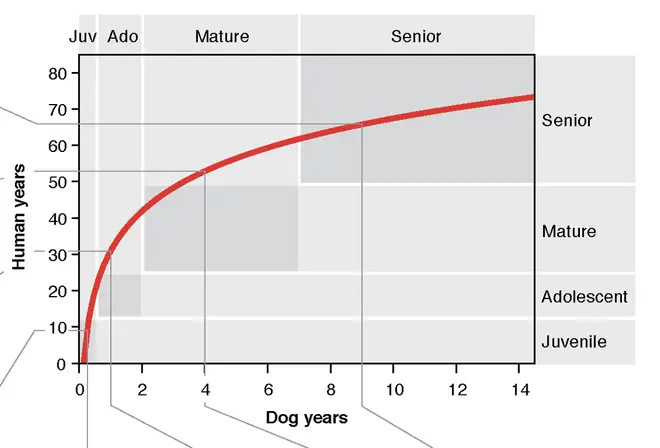On Air Now
Heart's Club Classics with Pandora Christie 7pm - 11pm
3 July 2020, 13:37

Working out our dog's ages has always been simple... or so we thought!
It's always been generally accepted that working out our dog's age in "human years" was through multiplying theirs by seven.
However, scientists have now claimed that this is actually incorrect and have created a new method which is a lot more accurate.
READ MORE: What can dogs eat from the BBQ? Safe and unsafe foods for your pet

The formula they have developed compares the ages of humans and dogs through comparing the genomes as they age.
Researchers at the University of California San Diego School of Medicine in America are the ones behind the new information and have explained that they look at the changing patterns of methyl groups, which are found in both dogs and in humans.
Without getting too scientific, it's possible to compare these as methyl groups are added to both dogs and humans' DNA as they age.
This is all a normal part of ageing and it works to prevent sudden ageing and to protect against formation of cancerous cells.
The scientists involved think their new formula could be useful for vets as well as pet owners.

Senior author of the study Trey Ideker said: "There are a lot of anti-aging products out there these days with wildly varying degrees of scientific support.
"But how do you know if a product will truly extend your life without waiting 40 years or so?
"What if you could instead measure your age-associated methylation patterns before, during and after the intervention to see if it's doing anything?"
In order to conduct the research, blood samples from 105 Labrador retrievers were used and following its analysis, they were able to create a graph that can be used to match up your dog's age with the comparable human age.

It shows how rapidly dogs age, as according to them a one-year-old dog is said to be similar 30-year-old human.
A four-year-old canine is comparable to a a 52-year-old human.
By the time a dog reaches seven-years-old its ageing is thought to slow.
Ideker said: "This makes sense when you think about it.
"After all, a nine-month-old dog can have puppies, so we already knew that the 1:7 ratio wasn't an accurate measure of age."
He added: "I have a six-year-old dog -- she still runs with me, but I'm now realizing that she's not as 'young' as I thought she was."